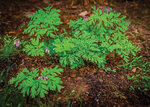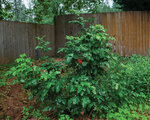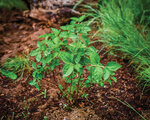


The Pacific Northwest is abundantly rich in native plants of all sizes, which can be utilized to benefit the landscape, wildlife and pollinators.
The U.S. Forest Service encourages people to use those plants instead of ones grown in other places of the world to provide better biodiversity in urban areas.
“Native plants are adapted to the local climate and soil conditions where they naturally occur,” the U.S. Forest Service stated in a release on native gardening. “These important plant species provide nectar, pollen, and seeds that serve as food for native butterflies, insects, birds and other animals. Unlike natives, common horticultural plants do not provide energetic rewards for their visitors and often require insect pest control to survive.”
There are hundreds of native plant species in Washington state, according to Washington State University. Before selecting the right fit, people should consider their elevation and the amount of sunlight they get in that area, along with other factors.
“When choosing native plants for your landscape, it’s a good idea to first gather information about your landscape conditions so that you can be sure to select plants that will thrive,” Erika Johnson, the coordinator of WSU’s Clark County Master Gardener program, stated in an email.
Johnson said people should pay close attention to the light conditions as full-shade plants can burn in full sun and a full-sun plant’s growth can be stunted in shady conditions. Plants also typically prefer either wet or well-drained soil conditions.
Another factor to consider, according to Johnson, is how large the plant is able to get and the size of the area a person hopes to fill.
“In terms of providing native plants to support wildlife, the native plant pallet should include plants that fill the continuum from very tall to tall, to medium-sized, on down to very low growing,” Johnson said. “This creates diversity in space, allowing for use by critters that use all of the different strata to make their living. Choose the largest plants first.”
Johnson provided a list of native plants for various conditions.
Some northwest native plants that are great for sunny conditions with drier soil include Indian plum, snowberry, Pacific dogwood, red-flowering currant, vine maple, blue elderberry and the Pacific bleeding heart.
Examples of northwest native plants that are great for sunny conditions with wet soil include the Pacific crabapple, red elderberry, salmonberry, red-osier dogwood and clustered wild rose .
Northwest native plants that are great for shady areas under conifers include salal, Oregon grape, evergreen huckleberry, inside-out flower, Woods strawberry and Oregon wood-sorrel.
Some northwest native plants that are great for dry open areas include mock orange, fescue and camas.
Native plants can be found at various area nurseries. For those who want to mix in non-native plants within native plants, Clark County’s plant hardiness zones are 7a, 7b, 8a and 8b, according to the U.S. Department of Agriculture.